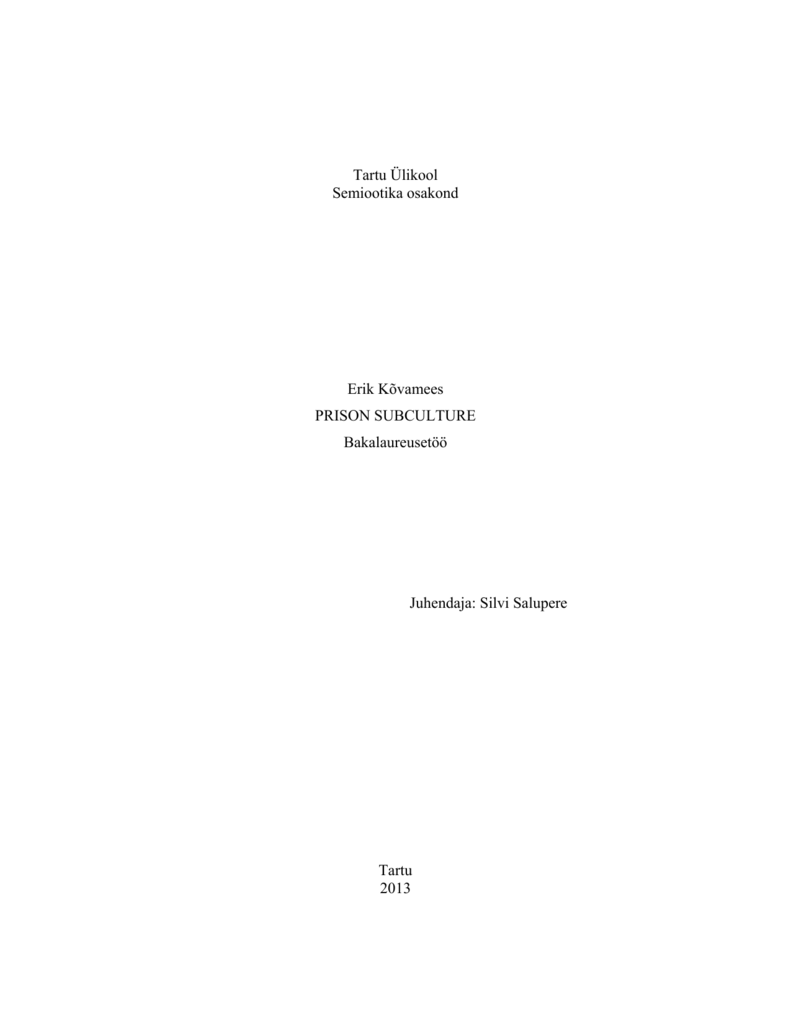‘Socialization in Correctional Communities’ discusses Donald Clemer’s process of prizonation. Prizonation is defined by Clemmer as, “the taking on, in greater or lesser degree, of the folkways, mores, customs and general culture of the penitentiary.” Clement saw prizonation as an illustration of more general pro- cesses of assimilation occurring wherever people are introduced to an unfamiliar culture. The result is an individual that is immune to a conventional value system. Degrees of prizonation in an individual can be examined to determine one’s adjustment to release. Prizonation is considered an incomplete concept because it only examines transmission of culture but it does not examine the culture of prison itself. Prizonation is upheld by the prison system process. One is stripped of identity and given a serial number to be identified by. Impersonality is present among the prison system and it supports prizonation. Clemmer postulated that the variables affecting degree of prisonization are : socialization during pre-penal life, continuation of positive relationships outside of the penitentiary, affiliation with inmate groups with inmate groups, placement into small groups that are separate from the general population, and the duration of the sentence. Clement conducted a survey to test an inmate’s rate of conformity to guard’s rules. The more conformity an inmate displays to the guards rules, the more the inmate has undergone prisonization. Clement reasons that no inmate can escape prizonation because of the exposure one faces to concepts such as inferiority, and understanding lacking basic needs. His survey was made up of hypothetical questions that analyzed if an inmate would conform to a guard’s general expectations. An example of one of Clemmer’s situations were: “Inmates Smith and Long are very good friends. Smith has a five-dollar bill that was smuggled into the institution by a visitor. Smith tells Long he thinks the officers are suspicious, and asks Long to hide the money for him for a few days. Long takes the money and carefully hides it.” If one were to respond to a situation in the way the guard would have liked, then they have conformed to the prison system and will most likely experience hardships adjusting to the outside world. The general results were that the beginning stage displayed low conformity during their first six months. The middle stage displayed the second highest rate of conformity. The last six month category displayed the most conformity.
- Donald Clemmer Prisonization Trump
- Erving Goffman
- Donald Clemmer Prisonization
- Donald Clemmer Prisonization Of Women
- Donald Clemmer Prisonization Of Children

This information in this source is from an old study in 1961 but the paper makes concessions for what the study leaves out. This source is a study on resocialization in prison. The study is credible and therefore it is good for research on resocialization. This is a scholarly article that I would cite. The author is a non profit organization that is there to help scholars so the authority is credible. This information is the most detailed account of resocialization processes in prison but it can not be assumed to repeat in every situation. This is non biased and the article stayed focused on the study and the results. Discussion of the results is backed up by the facts in the study.

Donald Clemmer Prisonization Trump

Erving Goffman
Title: The Prison Community Donald Clemmer 1 The Prison CommunityDonald Clemmer. CJ 365, Summer 2001. May 30, 2001 2 Introduction. The process through which an individual will take on the values and mores of the penitentiary. The prison is a world in and of itself. In The Prison Community (1940; 1958), Donald Clemmer coined the word 'prisonization' and defined it as the process by which the psyches and behaviors of convicts were molded by the social and structural hallmarks of prison life. Clemmer's research, moreover, led him to suggest that prisonization largely confounded the social ideal underlying. Donald Clemmer states that prisonization entails assimilation. Under the context of culture, assimilation refers to the fitting of an individual into a cultures and beliefs held by a different groups of people. In order to easily fit into the new group, a person should have the basic social skills.

Donald Clemmer Prisonization
Resocialization is when old behaviors are discarded because they do not fit a new social situation. Inmates are a group that faces resocialization. Clemmer’s term “prizonation” is an example of resocialization. Prizonation is taking on the norms of prison. Resocialization is prizonation because during the resocialization process, people unlearn non-useful habits and struggle to find habits that are beneficial. Clemmer’s survey is an in-depth analysis of resocialization in prisons. A concept from Clemmer’s analysis of prizonation that is interesting, in correspondence with the subject of resocialization, is that the degree of conformity to the previously occupied society will impact the adjustment period to the newer one.
Donald Clemmer Prisonization Of Women
Word Count – 624
Donald Clemmer Prisonization Of Children
Thanks for telling us about the problem. Kayla marked it as to-read Mar 30, Dika marked cemmer as to-read Mar 21, Abstract In The Prison Community;Donald Clemmer coined the word “prisonization” and defined it as the process by which the psyches and behaviors of convicts were molded by the social and structural hallmarks of prison life. Abstract In The Prison Community;Donald Clemmer coined the word “prisonization” and defined it as the process by which the psyches and behaviors of convicts were molded by the social and structural hallmarks of prison. Sep 03, 2020 DONALD CLEMMER THE PRISON COMMUNITY PDF - The Prison Community.